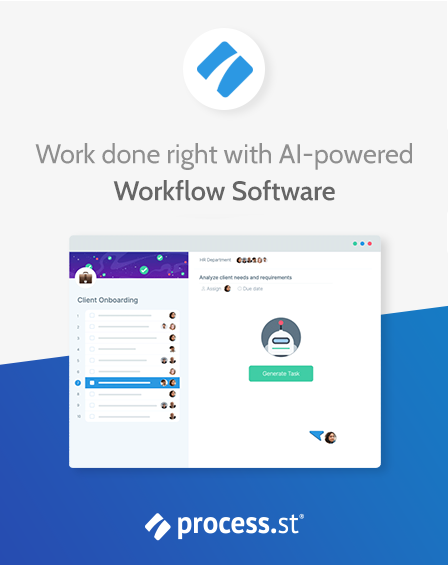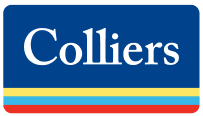Get work done right, and right-on-time with our industry leading BPM platform.
The Best Operations Management Software for Every Company
Operations management software makes all the difference in the world to organizations in all of their recurring processes. They save time, money, resources, and headaches for all team members by streamlining operations.
But selecting the right one for your organization can be a challenge. How do you know what features to look for? How do you compare the different software? Well, lucky for you, we are experts in all things operations and have plenty of advice and recommendations to share.
Let’s cut through all the BS and hop right to it!
What is operations management software?
Operations management software is a valuable tool for businesses looking to streamline and optimize their day-to-day operations. This software helps companies effectively manage and coordinate a wide range of business processes, from inventory management to project management.
One key feature of operations management software is its ability to provide real-time insights into various aspects of a company’s operations. This means that decision-makers can have access to up-to-date information and make informed decisions based on real-time data. This level of visibility can greatly improve operational efficiency and reduce operational costs.
Another important aspect of operations management software is its ability to automate manual processes. By automating tasks such as document management and inventory tracking, businesses can save time and eliminate human error. This not only increases productivity but also reduces the likelihood of costly mistakes.
Furthermore, operations management software often includes features for business process management. This allows businesses to define, model, and optimize their workflows, ensuring that tasks are completed in a timely and efficient manner.
By having a centralized platform for managing business processes, companies can eliminate the need for multiple systems and improve overall operational efficiency.
Best operations management software
There are tons of operations management software out there, and choosing one can be a daunting task because they all offer something different. To help cut through all the noise, here are five of our favorite operations management tools.
Process Street
For team collaboration, the best tool is Process Street.
This software gives you the ability to invite anyone to collaborate on a workflow, whether they work in-house or not. It keeps each step of every process you use organized. Using integrations with third-party apps such as Zapier, Salesforce, and Slack to automate the workflow, Process Street keeps everything in one place. Integrations like that really help to streamline operations and make sure nothing falls through the cracks.
Monday.com
Monday is the most versatile software for project management.
Monday.com utilizes very user-friendly timelines and calendars to structure tasks, giving users a clear picture of when things should be completed. You can also change the view to see the project tasks laid out in a Kanban or Gantt chart. Monday gives project managers a lot of flexibility in their methodologies.
Asana
Asana is the best budget operations management software for small businesses.
If you have a team of 15 or fewer, Asana is a great option. Its free plan is much richer in features than other software, and it offers unlimited projects and file storage for small teams. If your operations and projects are basic, you will never need to upgrade to a paid plan. You can even use automation on the free plan!
Trello
Trello is excellent for remote project management.
In my previous job as a remote project manager, I used Trello to manage multiple projects at once to great success. It’s a great way to collaborate and have all the steps of the project clearly laid out and defined. You can see what your colleagues have done, or are currently working on in real-time, making it easier to know the status of your project without having to wait for replies from someone in another time zone.
Basecamp
Self-described as the “all-in-one toolkit” for managing operations, Basecamp is the best operations management software for communication. Projects and workflows have message boards and group chats so users can talk to each other. Additionally, it features team schedules so everyone can see what the others have on their schedules and when their deadlines are.
Benefits of using operations management software
Using operations management software offers a wide range of benefits for businesses of all sizes. Here are some key benefits of implementing such software:
Streamline business processes
Operations management software helps automate and optimize various business processes, reducing the reliance on manual tasks. This streamlines operations, improves efficiency, and saves time for employees.
Real-time insights
With real-time monitoring and reporting capabilities, operations management software provides valuable insights into the daily operations of a business. This allows managers to make informed decisions and take proactive actions to address issues promptly.
Reduced operational costs
By automating repetitive tasks and reducing manual processes, operations management software helps minimize operational costs. This increased efficiency and accuracy in daily operations lead to reduced errors and wastage.
Improved communication and collaboration
Operations management software often includes features such as task management and project management tools. These facilitate better communication and collaboration among team members, ensuring tasks are completed on time and within budget.
Enhanced visibility
Operations management software provides real-time visibility into various aspects of a business, including inventory management, employee performance, and financial performance. This visibility enables businesses to make data-driven decisions and quickly identify areas that need improvement.
Scalability and flexibility
As businesses grow and evolve, operations management software can easily adapt to changing needs. It provides scalability and flexibility, allowing businesses to add additional users or integrate new features as required.
Types of operations management software
There are different types of operations management software available in the market, each catering to specific needs and requirements of businesses. Here are some of the common types of operations management software that can streamline and enhance various aspects of a company’s operations:
Enterprise resource planning (ERP) software
ERP software offers a wide range of functionalities, including inventory management, customer relationship management, financial management, and human resources management. It provides a centralized platform for businesses to manage and integrate their various business processes, enabling efficient resource allocation and improved operational efficiency.
Supply chain management (SCM) software
Supply chain management software focuses on optimizing the flow of goods and services from suppliers to customers. It helps businesses manage inventory, track shipments, and forecast demand, ensuring smooth operations and minimizing delays or stockouts. SCM software also helps in building strong relationships with suppliers, improving overall supply chain performance.
Project management software
Project management software helps businesses plan, organize, and manage their projects effectively. It provides tools for creating and assigning tasks, tracking progress, setting deadlines, and managing resources. With project management software, businesses can ensure that projects are completed on time, within budget, and meet the desired quality standards.
Task management software
Task management software allows businesses to assign, monitor, and track individual tasks or assignments. It helps in streamlining workflow, improving collaboration, and ensuring timely completion of tasks. Task management software often includes features such as task prioritization, task dependencies, and real-time notifications, enabling efficient task management.
Document management software
Document management software helps in digitizing and organizing documents, reducing the reliance on paper-based processes. It allows businesses to store, retrieve, and share documents securely, improving accessibility and eliminating manual document handling tasks. Document management software also provides version control, ensuring that the latest versions of documents are always available.
Business intelligence software
Business intelligence software provides businesses with valuable insights into their operations by analyzing large volumes of data and generating actionable reports and dashboards. It helps decision-makers make informed decisions, identify trends, and monitor key performance indicators (KPIs). BI software enables businesses to optimize operations and uncover opportunities for growth.
Customer relationship management (CRM) software
CRM software focuses on managing and nurturing customer relationships. It helps businesses track customer interactions, manage leads, and analyze customer data for effective marketing and sales strategies. CRM software enables businesses to provide personalized experiences, improve customer satisfaction, and boost customer retention rates.
Top features to look for in operations management software
Now knowing all the exciting benefits operations management software can bring your organization, you must be pretty excited to purchase one! But before you do, I want to share with you the top features you should be looking for. Read through this section to decide which ones you should prioritize for your company.
Security
Security should never, ever be compromised, both for the safety of your organization and your customers. Operations management software with strong security measures should be at the top of your list of the most important features to have.
For proper security accreditation, look for third-party audits like SOC 2 Type II to ensure the vendor is correctly handling and protecting data.
Project management tools
There are operations management software that is able to help you with your company’s projects as well as your recurring processes. If that’s what you need, look for software that includes:
- Timetables
- List views
- Gantt charts
- Real-time reporting
Good project management tools will work with both Agile and Scrum, so you don’t have to worry about making sure the tool is compatible with your project management methodology.
Inventory tracking
A major plus in operations management software for businesses that create physical products is the ability to track inventory. Because it helps to keep track of all inventory in stock, it reduces supply chain problems and shipping errors, both of which can be costly problems for a business.
Scheduling capabilities
Being able to schedule actions in a workflow is a huge advantage. Scheduling features in operations management software allow you to:
- Automatically send contracts
- Send reminders to finish tasks
- Schedule times tasks must be completed
- Set due dates
It’s an excellent way to keep operations organized and on time.
Analytics and reporting
Good operations management software should capture and store data. From the analytics and reporting, you’ll be able to see things like:
- How long it takes to complete certain tasks
- How many tasks get rejected
- Who missed deadlines
- All inputted data
Good analytics and real-time reporting capabilities are essential for gaining the most value possible out of the software.
Integrations
Integrations are amazing. They allow you to use multiple programs in one workflow, which means you get to keep everything in one place. It’s an organizational dream! Some examples of integrations that can be used in an operation tool include:
- Calendly
- Google Sheets
- Salesforce
- Zapier
- Slack
If the tool uses integrations like these ones, you’ll be able to automate them. When someone completes a task, another person may receive a notification on Slack or data could be sent to Salesforce.
Role-based user access
This feature is an absolute must, particularly for security compliance. It gives you the ability to make something editable, read-only, or completely hidden as needed.
On top of that, you can make only certain sections of a workflow available to one specific person or even a whole team without having to enter them all in manually.
Whatever important features you have on your list, make sure role-based user access is one of them. It can’t be skipped.
Operations management software case studies
Salesforce
Salesforce is one of the largest CRMs in the world, and it uses Process Street for:
- New client onboarding
- New employee onboarding & training
- Feature adoption & upselling
- Process documentation
Before it began using Process Street, Salesforce had trouble streamlining its complex operations. It’s now able to take those processes and turn them into simple checklists by using Process Street’s premade templates. Doing so has reduced human errors in documented processes, established and scaled best practices, and standardized internal operations. The Salesforce team now benefits from streamlined processes that facilitate continuous improvement.
HelloFresh
The meal delivery service HelloFresh uses Asana to manage its complex operations. Before Asana, HelloFresh relied on spreadsheets to track its processes, which were slow and prone to human error.
With Asana, the Ingredients Development team at HelloFresh is able to automate the process of tracking inventory. That has given them the time to concentrate on other, more complex areas of their jobs, which has led to a 33% increase in productivity.
UNICEF
The children’s humanitarian agency works remotely to the extreme. Its global team members need an efficient way to share information and work on projects quickly when emergencies happen. It found an excellent solution in Trello.
Trello’s simple structure of board-list-card was easily adopted by UNICEF’s Innovation team, who use it for coordination and collaboration from all over the world. They have boards for general operations and create new ones for specific emergencies when they occur. When Hurricane Irma hit the Caribbean, UNICEF made a special board to coordinate the relief effort.
Things to remember
Operations management software does a lot to help businesses run at their best. It saves people time, energy, and money. In fact, it often leads to increased productivity and profits.
As long as you identify the features that are most important to you and spend the necessary time training your team, you should find great success in whichever operations management software you choose.
Bonus tip: Your team’s feedback and ideas regarding operations management software are incredibly valuable. Successful implementation relies on leadership being open to ideas for improvement. The smoothest operations are built when teams listen to each other.







 Workflows
Workflows Projects
Projects Data Sets
Data Sets Forms
Forms Pages
Pages Automations
Automations Analytics
Analytics Apps
Apps Integrations
Integrations
 Property management
Property management
 Human resources
Human resources
 Customer management
Customer management
 Information technology
Information technology


